MY CLASSICS
Coupé Fiat
Cars
| 27-12-2019
As a child I thought the Coupé Fiat was designed by Pininfarina. After all, that name was on the side of the car. I later found out that a Fiat designer was responsible for the design, and that only made it more interesting.
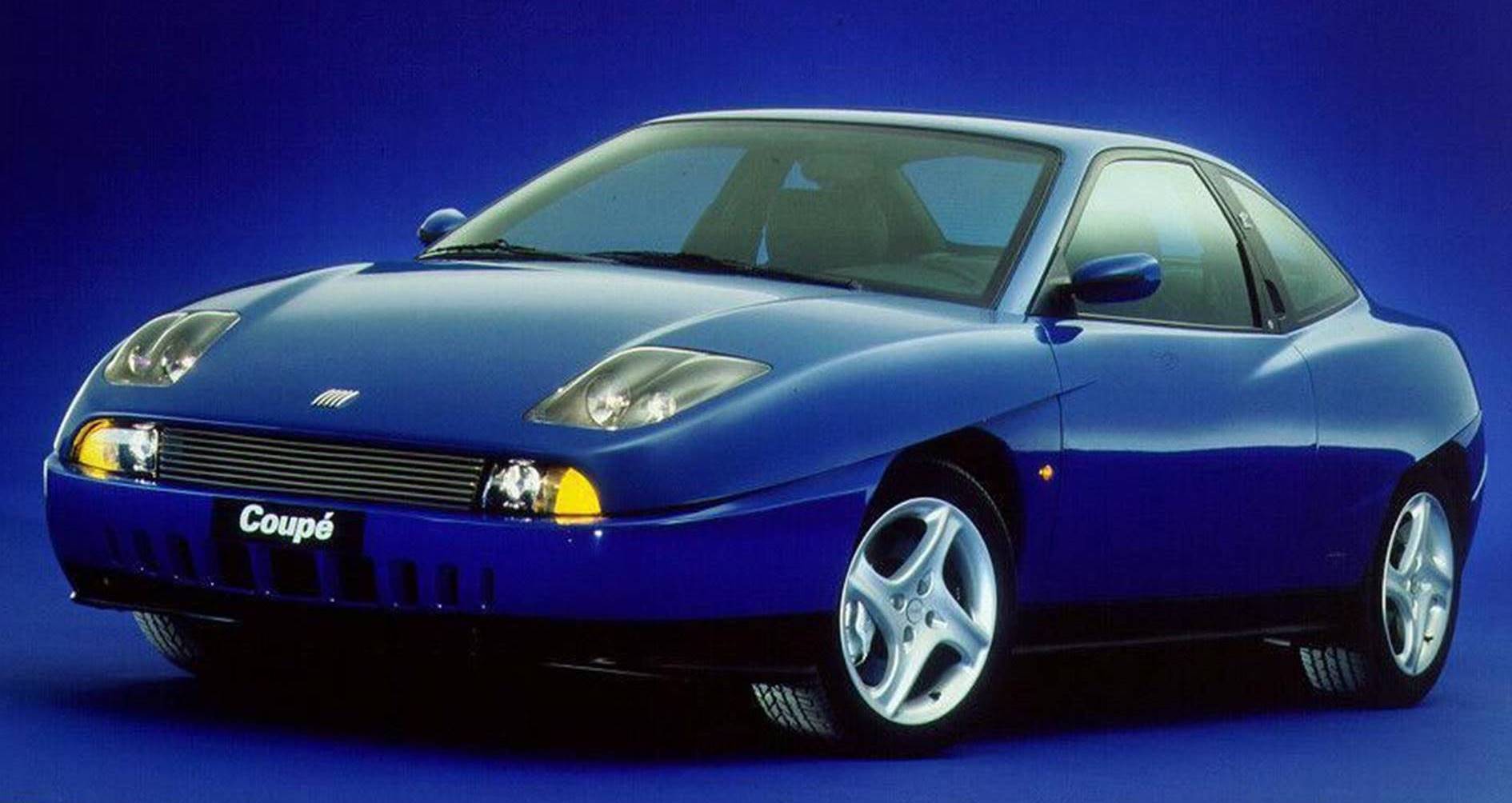
When I started drawing cars in 1992, I created imaginative but totally impossible structures on wheels. By the time I went to high school, in 1995, I wanted my designs to be realistic but original and, above all, not boring. Fortunately in the 90s more and more fresh designs came on the market, which could serve as an example to me. Fiat was certainly included, with models such as the Barchetta, Brava, Multipla and Punto. But the pinnacle at that brand was surely the Coupé Fiat. The naming of that car was typical: where everyone puts the type name after the brand name, Fiat turned it around for this model. That must have been a statement: everything about this car is pert. On many websites, however, the car is referred to as a Fiat Coupé - I think because database systems cannot handle different orders. Fortunately, the design departments of Fiat and Pininfarina were more open-minded.
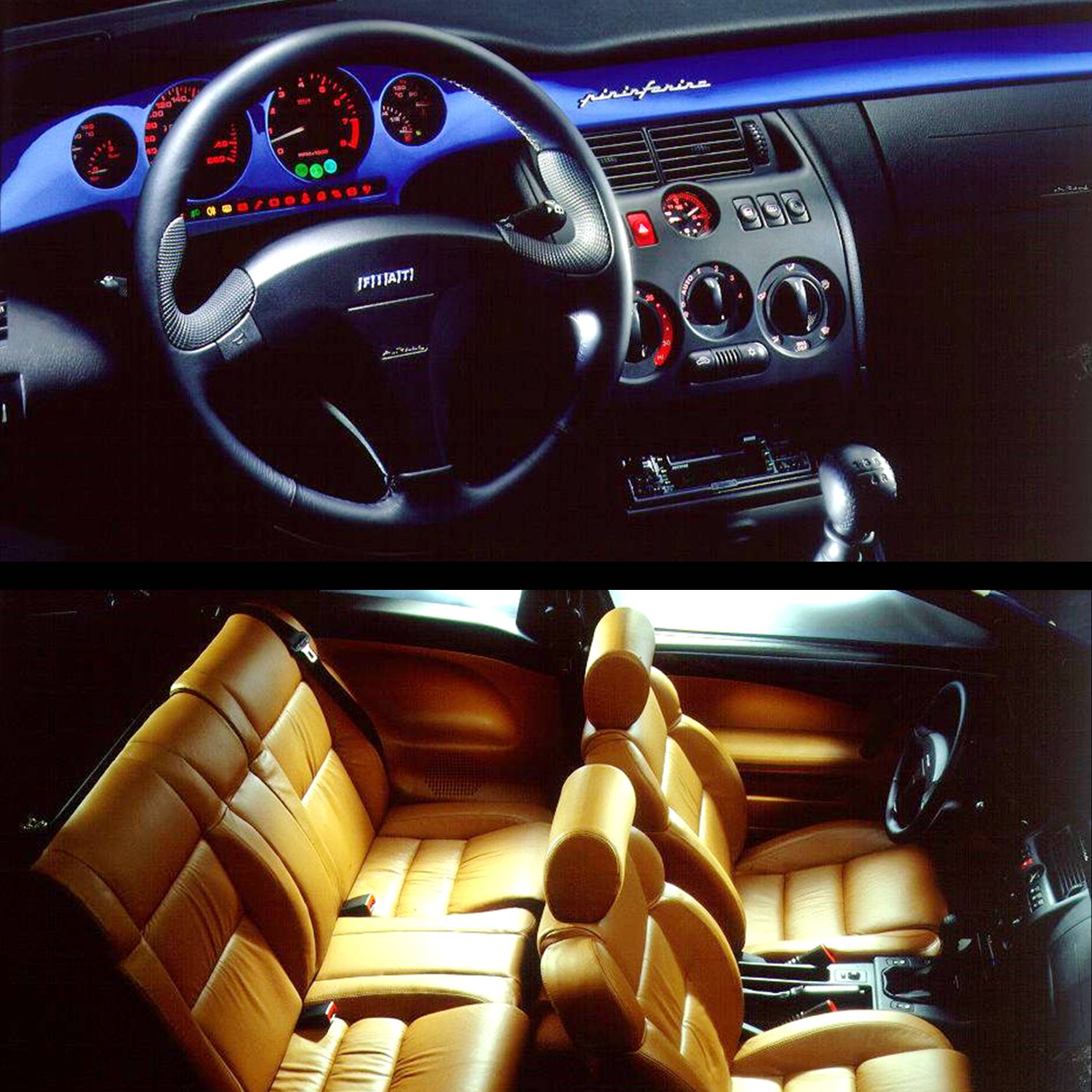
The Coupé Fiat started its existence because space became available at the Pininfarina factory. The design agency often worked for Fiat at that time, so they were asked to make a proposal for the design of a new coupé, based on the technical basis of the Tipo. The design department of Fiat itself also was commissioned. A young American, Chris Bangle, had recently started working there. Instead of a classically elegant design, as Pininfarina chose to create, Bangle decided to go extreme. With that he hit the bull's-eye, because the management wanted to continue with his idea. For the appearance of his Italian coupé for the common man (m/f), he found inspiration in the designs that Gandini made for the Bertone design house, such as the Lamborghini's Miura and Countach. For the headlights he looked at the Ford GT-40 and the rear was influenced by classic Ferrari's like the Dino. Despite that inspiration, Bangle's own style is also clearly visible: the combination of sharp folds and round shapes that you see on the Coupé Fiat is also reflected in the designs he later made for BMW. The same applies to the large smooth surfaces (thanks in part to the placement of the door handles in the
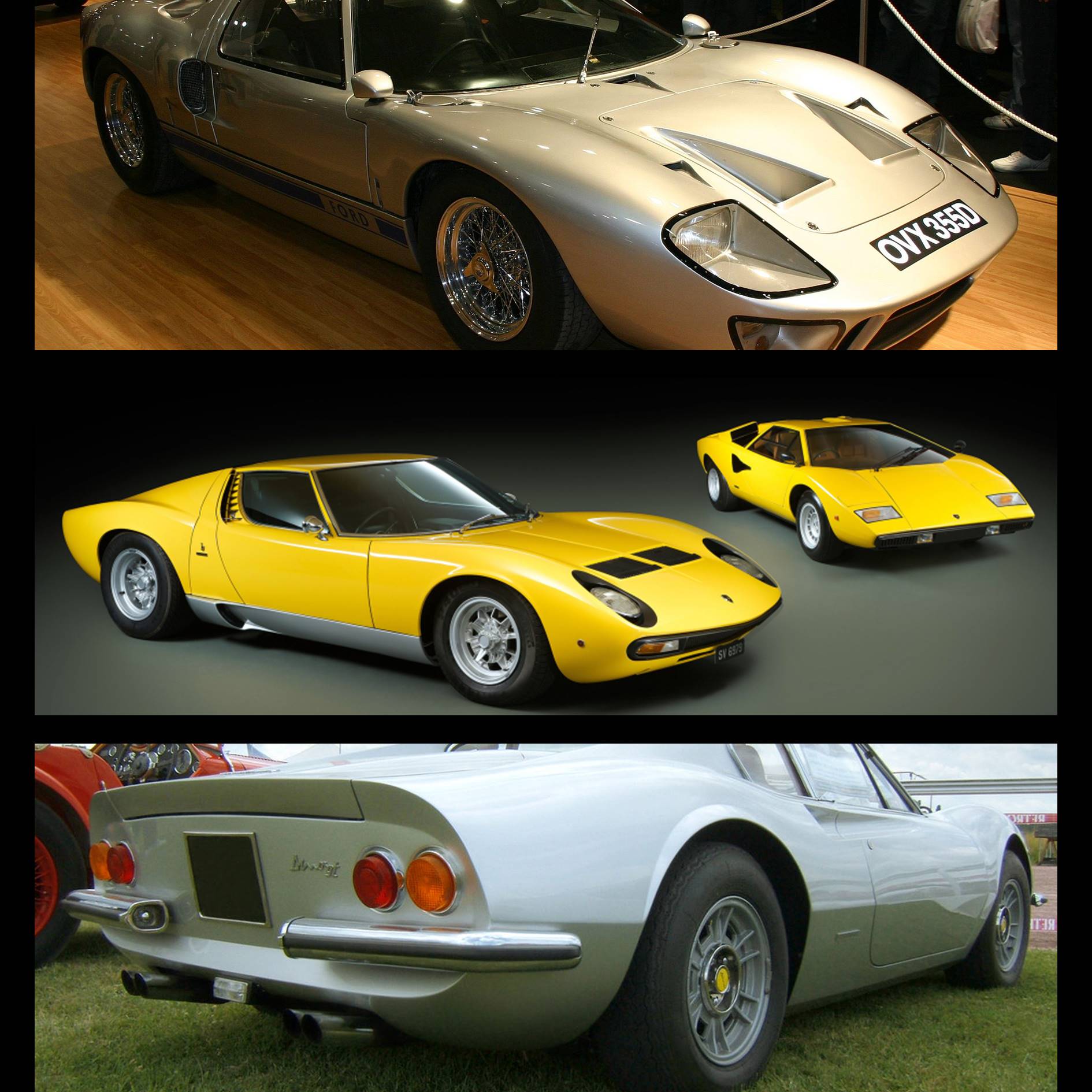
Like the Bangle BMWs, the design of the Coupé Fiat sparked controversy. For example, Dutch car journalist Ted Sluijmer writes in Alle Auto's 2000 (All Cars 2000; the car has been on the market for four years when that car annual is published): “A clear wedge shape with lines that contradict each other, do not belong together and sometimes even clash." I could not agree less with him. The car does not actually have a wedge shape; this is only suggested by the sharply drawn diagonals that reinforce each other because they run parallel to each other. This way of influencing the proportions by lines that suggest something, you can see also with the Bangle BMWs. Of course, the Coupé Fiat has an appearance that you need to get used to at first glance, but in my experience these kinds of designs are generally the ones that prove to be the best in the long term. A Coupé Fiat is a remarkable appearance that cannot be confused with any other model, even after 23 years. That's a good job anyway, but for an affordable coupé based on a fairly average hatchback (although I wrong the Tipo a bit with that characterization) it really is a big achievement. An achievement on Chris Bangle's CV, that is. But why then does it say Pininfarina on the flanks? That has nothing to do with the fact that the interior - with a strip in body color across the full width of the dashboard - wás designed by Pininfarina. That autogram is there because Pininfarina got to build the car for Fiat. Chris Bangle's signature also should have been on the car, off course.
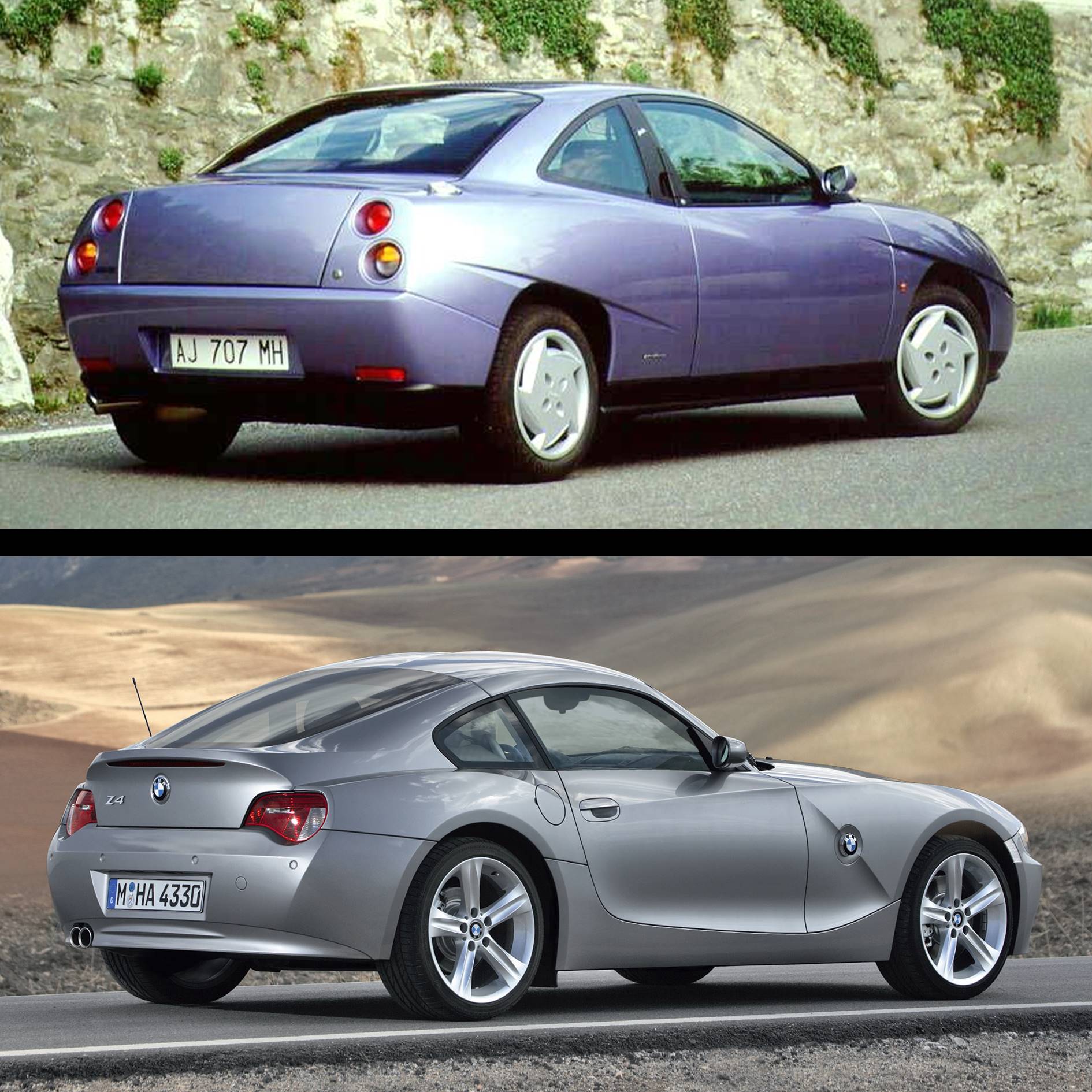
As I type this piece, I realize that many of Bangle's sources of inspiration have modern descendants or relatives. After all, Ford has the GT as a contemporary interpretation of the GT-40, the Lamborghini Countach has a descendant in the Aventador and with a bit of good will you could see the Ferrari F8 Tributo as a descendant of the Dino 246 GT. With those cars and the Coupé Fiat as a starting point, I started sketching. My sketch is based on the Peugeot 308, since both brands since recently belong to the same group and the Peugeot's proportions are just a bit nicer than those of the current Fiat Tipo and its engines are more modern. Of course, Fiat now has more important things on its mind than a new Coupé, but that makes the exercise no less interesting. While sketching, I notice really well how clever the design of the Coupé Fiat is. It's not easy to draw a dynamic-looking coupé within those proportions, while giving it a contemporary appearance and its own special character. So I'm not entirely satisfied with the result, but it gives a bit of an impression...
By the way, this is not the first time the Coupé Fiat gets me to draw. In 1996 I had designed a sedan and break, the latter being largely a Renault Laguna Break with the headlights of a Peugeot 306. That line-up also needed a coupé, so I added elements of the Coupé Fiat; especially the short angular butt and the diagonal line over the rear wheel arches are easy to recognize. I chose to deviate a little further from the norm and drew an organically formed rear side window that continued into the bulging of the flanks. Looking back this may not be the best design choice ever, but on the other hand it is nicely pert. Just like the Coupé Fiat.
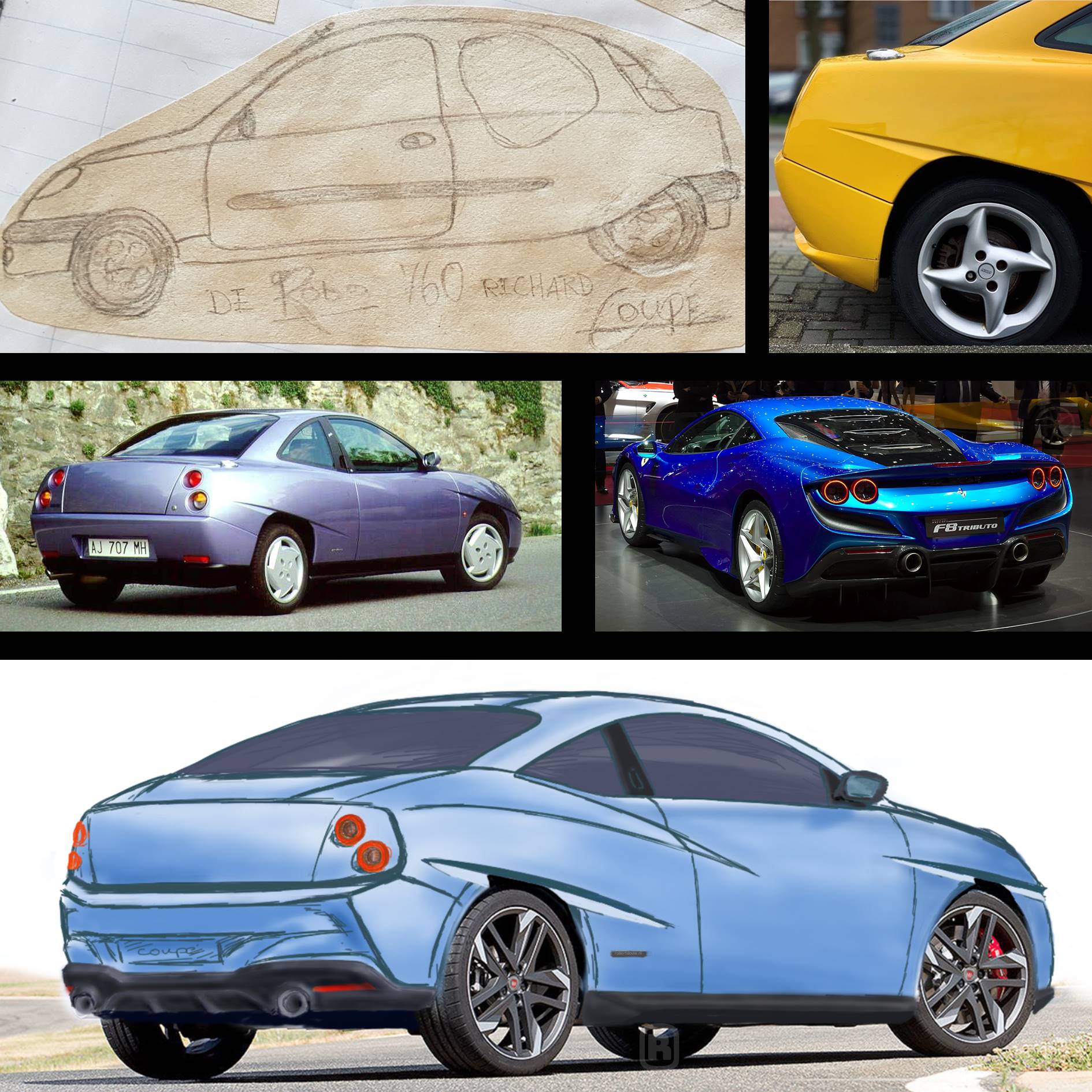

Coupé Fiat
StatementWhen I started drawing cars in 1992, I created imaginative but totally impossible structures on wheels. By the time I went to high school, in 1995, I wanted my designs to be realistic but original and, above all, not boring. Fortunately in the 90s more and more fresh designs came on the market, which could serve as an example to me. Fiat was certainly included, with models such as the Barchetta, Brava, Multipla and Punto. But the pinnacle at that brand was surely the Coupé Fiat. The naming of that car was typical: where everyone puts the type name after the brand name, Fiat turned it around for this model. That must have been a statement: everything about this car is pert. On many websites, however, the car is referred to as a Fiat Coupé - I think because database systems cannot handle different orders. Fortunately, the design departments of Fiat and Pininfarina were more open-minded.

Interior of the Coupé Fiat
Bangle versus PininfarinaThe Coupé Fiat started its existence because space became available at the Pininfarina factory. The design agency often worked for Fiat at that time, so they were asked to make a proposal for the design of a new coupé, based on the technical basis of the Tipo. The design department of Fiat itself also was commissioned. A young American, Chris Bangle, had recently started working there. Instead of a classically elegant design, as Pininfarina chose to create, Bangle decided to go extreme. With that he hit the bull's-eye, because the management wanted to continue with his idea. For the appearance of his Italian coupé for the common man (m/f), he found inspiration in the designs that Gandini made for the Bertone design house, such as the Lamborghini's Miura and Countach. For the headlights he looked at the Ford GT-40 and the rear was influenced by classic Ferrari's like the Dino. Despite that inspiration, Bangle's own style is also clearly visible: the combination of sharp folds and round shapes that you see on the Coupé Fiat is also reflected in the designs he later made for BMW. The same applies to the large smooth surfaces (thanks in part to the placement of the door handles in the
B-pillar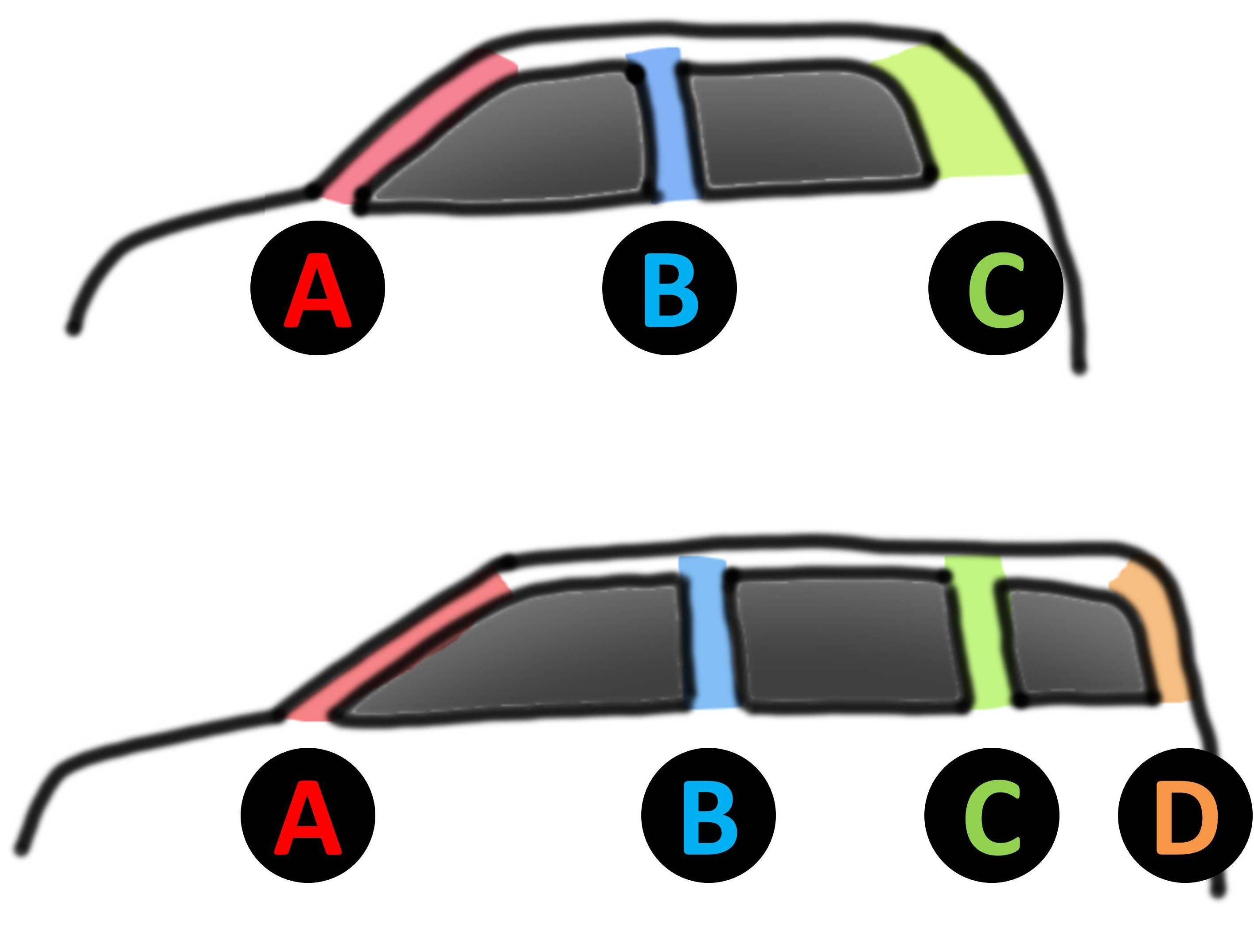
) and the parallel and (optically) continuous lines.


Ford GT-40, Lamborghini Miura and Countach, Dino 246 GT
ControversyLike the Bangle BMWs, the design of the Coupé Fiat sparked controversy. For example, Dutch car journalist Ted Sluijmer writes in Alle Auto's 2000 (All Cars 2000; the car has been on the market for four years when that car annual is published): “A clear wedge shape with lines that contradict each other, do not belong together and sometimes even clash." I could not agree less with him. The car does not actually have a wedge shape; this is only suggested by the sharply drawn diagonals that reinforce each other because they run parallel to each other. This way of influencing the proportions by lines that suggest something, you can see also with the Bangle BMWs. Of course, the Coupé Fiat has an appearance that you need to get used to at first glance, but in my experience these kinds of designs are generally the ones that prove to be the best in the long term. A Coupé Fiat is a remarkable appearance that cannot be confused with any other model, even after 23 years. That's a good job anyway, but for an affordable coupé based on a fairly average hatchback (although I wrong the Tipo a bit with that characterization) it really is a big achievement. An achievement on Chris Bangle's CV, that is. But why then does it say Pininfarina on the flanks? That has nothing to do with the fact that the interior - with a strip in body color across the full width of the dashboard - wás designed by Pininfarina. That autogram is there because Pininfarina got to build the car for Fiat. Chris Bangle's signature also should have been on the car, off course.

Two coupés by Bangle: Coupé Fiat and BMW Z4 Coupé
New CoupéAs I type this piece, I realize that many of Bangle's sources of inspiration have modern descendants or relatives. After all, Ford has the GT as a contemporary interpretation of the GT-40, the Lamborghini Countach has a descendant in the Aventador and with a bit of good will you could see the Ferrari F8 Tributo as a descendant of the Dino 246 GT. With those cars and the Coupé Fiat as a starting point, I started sketching. My sketch is based on the Peugeot 308, since both brands since recently belong to the same group and the Peugeot's proportions are just a bit nicer than those of the current Fiat Tipo and its engines are more modern. Of course, Fiat now has more important things on its mind than a new Coupé, but that makes the exercise no less interesting. While sketching, I notice really well how clever the design of the Coupé Fiat is. It's not easy to draw a dynamic-looking coupé within those proportions, while giving it a contemporary appearance and its own special character. So I'm not entirely satisfied with the result, but it gives a bit of an impression...
By the way, this is not the first time the Coupé Fiat gets me to draw. In 1996 I had designed a sedan and break, the latter being largely a Renault Laguna Break with the headlights of a Peugeot 306. That line-up also needed a coupé, so I added elements of the Coupé Fiat; especially the short angular butt and the diagonal line over the rear wheel arches are easy to recognize. I chose to deviate a little further from the norm and drew an organically formed rear side window that continued into the bulging of the flanks. Looking back this may not be the best design choice ever, but on the other hand it is nicely pert. Just like the Coupé Fiat.

My old design with a piece of Coupé and my new sketch with the Coupé and F8 Tributo
MY CLASSICS
In the My classics section, I add a model to my digital collection of classics every other week. For that, I select cars whose design appeals to me or evokes memories. So nostalgia, and very subjective. Hence the section title: my classics.
In the next episode: This one ís by Pininfarina...
Sources
- Formtrends.com
- Pictures Fiat: fiatpress.nl; gele Coupé: @plankhond op Instagram
- Picture BMW Z4 Coupé: press.bmwgroup.com
- Picture Ford GT-40: By Adriano C. / Adriano - Own work, CC BY-SA 3.0, https://commons.wikimedia.org/w/index.php?curid=19278060
- Picture Lamborghini's: en.wheelsage.org
- Picture Dino 246 GT: By Rundvald - Own work, Publiek Domein, https://commons.wikimedia.org/w/index.php?curid=9463159
- Picture Ferrari F8 Tributo: By Alexander Migl - Own work, CC BY-SA 4.0, https://commons.wikimedia.org/w/index.php?curid=77168613
